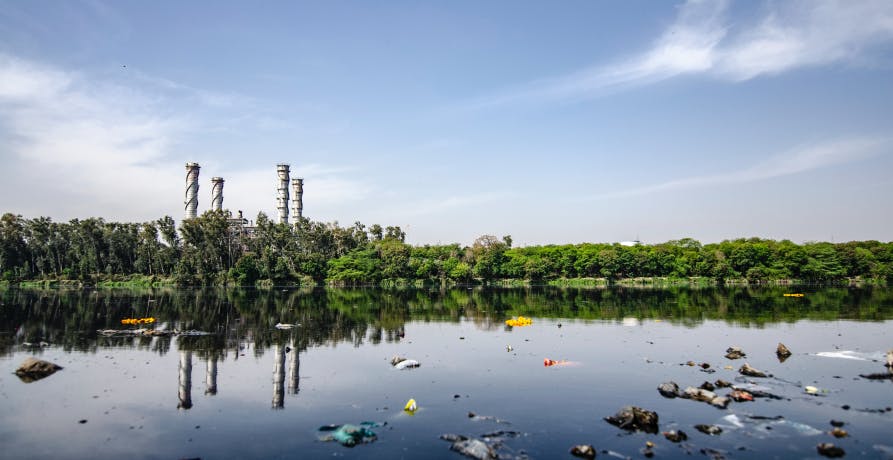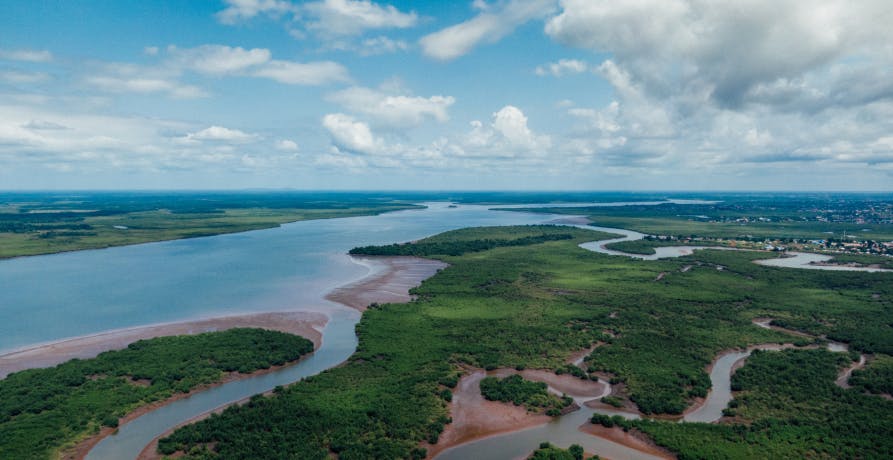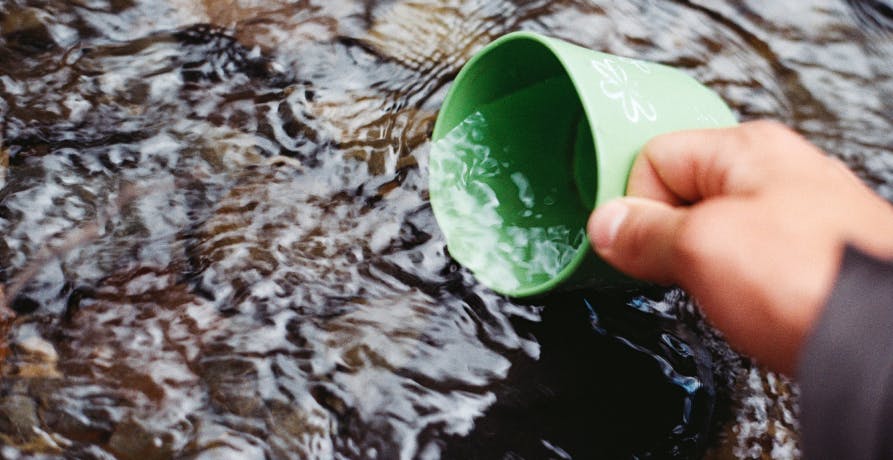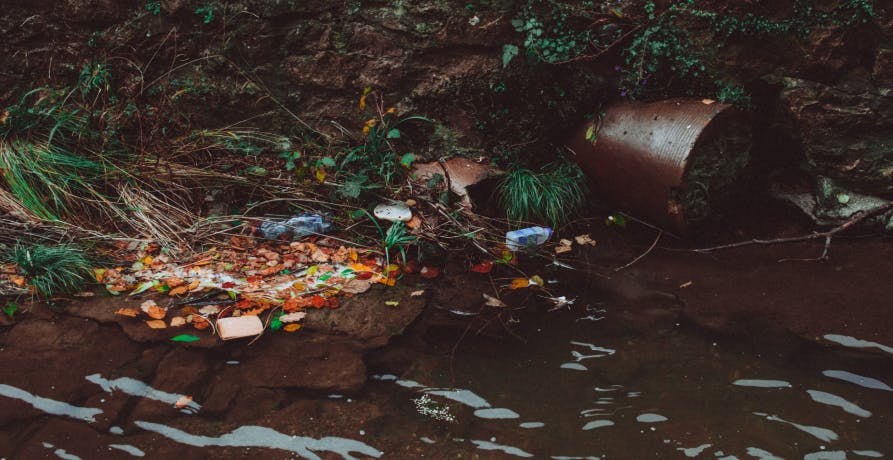ESG / CSR
Industries
What are the UK Water Framework Directive (WFD) Regulations?



The Water Framework Directive (WFD) Regulations are an important mechanism for assessing and managing the water environment in the UK. It originates from the EU Water Framework Directive, but still forms part of UK law post-Brexit.
The core aim of the Water Framework Directive is to protect the UK’s water environments by preventing their deterioration and improving their quality. It does this by setting ecological targets and environmental objectives.
👉In this article we’ll look at the UK’s Water Framework Directive in more detail, and discover what its objectives and targets actually require.
What are the Water Framework Directive Regulations?
The Water Environment (Water Framework Directive) Regulations 2017 came into effect in April 2017, replacing the previous 2003 version of the regulation. The regulations apply to England and Wales, while Scotland and Northern Ireland have their own versions covering their jurisdictions.
The regulations provide a framework for managing the water environment in the UK, and require that a river basin management plan is prepared for each river basin district - something we'll talk about in a bit more detail later.

👀 So where do they come from and why were they created?
As we’ve already mentioned, the UK’s Water Framework Directive actually follows the European Comissions’ Water Framework Directive (2000/60/EC). This was the most substantial piece of legislation covering water regulation ever produced by the Commission and required member states (this was pre-Brexit, so the UK was a member state at the time) to meet targets on the ecological and chemical status of their water bodies. Its main target was that all inland and coastal waters in the EU would reach “good ecological status” by 2015.
❓What counts as a water body? This includes lakes, reservoirs, streams, rivers, canals, groundwater and ecosystems that depend on groundwater such as wetlands, transitional waters (ie. estuaries), and coastal waters out to one nautical mile.
The target of ‘good ecological status’ required that not only should the chemical quality of the UK’s bodies of waters be of good status, but also all of the associated biological elements such as the plants, fish and creatures living in the waters. The Directive was underpinned by environmental standards that allowed the assessment of risks to the ecological quality of water bodies, and enabled the identification of improvements that would be needed to bring the water quality up to a good standard.
The UK adopted the EC Directive into UK law through the enactment of legislation in 2003 (The Water Environment (Water Framework Directive) Regulation 2003 which has since been repealed by the updated 2017 legislation), with Scotland And Northern Ireland enacting their own versions.
Why was the Water Framework Directive needed?
Are the UK’s rivers really that bad?
Unfortunately yes, and the situation isn’t that much better now! In fact, in 2020 the Department for Environment, Food and Rural Affairs (the UK department responsible for improving and protecting the UK’s environment) found that every single river and lake in England was polluted beyond legal limits, and that only 16% of water bodies met the criteria of ‘good ecological status’.
Unless we take action the situation will only get worse as the population increases and the effects of climate change become more and more apparent.
This is where the UK’s Water Framework Directive comes into play. It aims to improve the standard of our water bodies through something called the River Basin Management Planning Process.
Let’s take a closer look at what this means below.

The River Basin Approach
The Water Framework Directive adopted something called the river basin approach. This required the development of River Basin Management Plans (RBMPs) in order to achieve the objectives of the Water Framework Directive Regulations.
A RBMP was required for each River Basin District (RBD). This noted the current condition of the water environment within the district, the objectives for improving it and the proposed measures to deliver on the target of good status for all inland and coastal waters.

👉 A River Basin District is the area of land and sea, made up of one or more neighbouring river basins together with their associated groundwaters and coastal waters.
👍 For water bodies to be classified as having a ‘good ecological status’ under the Water Framework Directive they must meet certain standards in a range of areas including pollution, the number of fish and aquatic ie, and groundwater quality.
❗️There are five possible status classifications that can be awarded to a body of water. These are high, good, moderate, poor and bad. It’s also worth noting that some of our waters have been altered so much through human activity (for example the construction of dams or floodwalls), that it’s unrealistic for them to ever achieve a ‘good ecological status’. These bodies of water are classified as ‘heavily modified’ and instead, must reach a different standard called ‘good ecological potential’. This requires that all possible mitigation measures are adopted to maximise the ecological potential of the body of water.

River Basin Management Plans are produced every six years. The first River Basin Management Plans were agreed by the end of 2009 and covered the period up to 2015. The second cycle covered the period of 2015 to 2021, and the third, covers the period up until 2027.
The relevant authorities who are responsible for the development of River Basin Management Plans are the Environmental Agency (covering England), Natural Resources Wales, Scottish Environmental Protection Agency and the Northern Ireland Environmental Agency.
How are the RBMP’s enforced?
There are a number of mechanisms (both statutory and non-statutory) that can be used to deliver actions and ensure that measures outlined in the River Basin Management Plans produce outcomes. These mechanisms may be policy, legal or financial. For example a legal mechanism could stipulate that an activity can only be carried out in accordance with an environmental permit. A combination of different mechanisms are often used.
Legislative measures may include:
- Product controls
- Bans, prohibitions or notices
- Environmental permits, licences and statutory requirements including registrations, binding rules, permits, and quotas
- Planning policies
- Byelaws (ie. a regulation made by a local authority or enabling power)
Financial measures may include:
- Financial incentives
- Financial disincentives
Non-legislative measures include:
- Cooperation agreements
- Voluntary guidance and codes of practice
- Voluntary assurance schemes
- Education
- General campaigns
- In-person advice
- Naming and shaming
- Demonstration projects
- Network building
- Locally driven action
So what are some examples of measures introduced under RBMPs?
Real-life examples of measures include the implementation of legislation such as the Reduction and Prevention of Agricultural Diffuse Pollution Regulations 2018, which required good farming practices so that farmers minimise water pollution.
Or take the Water Industry Environment Programme and the Environment Agency’s Environment Programme, which improved parts of the UK’s water environment that weren’t up to required standards. They carried out upgrades to waste-water treatment works, improved the sewers network, adopted river and floodplain restoration projects, planted trees and put up fencing along rivers, and created projects to slow and store run-off.
Schemes were also adopted that saw the treatment of water from abandoned coal and metal mines, as well as the limitation of metals from contaminated mine wastes.
Another example is the Environmental Agency’s Restoring Sustainable Abstraction Programme, which aims to ensure that water abstraction in the UK supports ecology and natural resilience. This programme was successful in returning over 10 billion litres of water to the environment.
Other examples of actions taken that contribute towards the success of the Water Framework’s objectives include the removal of barriers in rivers and the installation of fish passes which help fish to migrate upstream, and ultimately improve fish populations.
Has the Water Framework Directive been effective?
The UK has already been through two River Basin Management Plan cycles (2009-2015 and 2015-2021). So, just how effective have they been in achieving the targets of the UK’s Water Framework Directive?
In October 2021 the UK Government published the ‘River basin planning: progress report’, which summarised what has been achieved in the latest cycle of RBMPs. The report analysed data on the UK’s water environment in 2019 compared with 2015. So what exactly did the report find?
Sadly, the portion of waters that achieved ‘good ecological status’ in England in 2019 was actually slightly less than in 2015 - 16% vs 17% in 2015. Which means that the majority of the UK’s water bodies (84%) are of a standard that is either moderate, poor or bad.
The overall result looks alarming but it doesn’t tell the full story. For example, there is movement between the other classes of status with some water bodies moving from either bad or poor to moderate, or conversely the deterioration of some water bodies where environmental pressures have increased.

What is the reason for this poor result?
The report identified that some water bodies failed to meet their objectives for a number of reasons, including:
- More recovery time was required after measures were implemented to see the desired effect. There is often a lag time between actions being taken and the effects being measurable in the environment. In this circumstance it is hoped that by the end of the next RBMP cycle that the responses in the environment will be detectable via classification results.
- Additional measures are required - in this case the measures identified and included in the River Basin Management Plan didn’t go far enough and so additional measures are needed.
- Expected measures weren’t implemented by 2021 - for various reasons it might not have been possible to implement all of the measures identified by the River Basin Management Plan.
Changes in evidence
Another significant factor in the poor results seen in the UK Government’s ‘River basin planning: progress report’ stems from changes to evidence and understanding since 2015. Let’s go over what this means in a bit more detail:
Climate Change
The UK is experiencing more extreme weather events more frequently. Rising temperatures and more frequent heat waves are directly impacting the UK’s water bodies. Freshwater species are particularly vulnerable. For example salmon levels have dropped significantly due to the increasingly hot dry summers. As a result this may cause certain water bodies to fail to meet their objectives under the Water Framework Directive.
Other examples of how climate change can adversely affect water bodies include where warmer water temperatures cause algae blooms and weed choking. Or where invasive species thrive in these new environmental conditions.
As the effects of climate change become increasingly noticeable, the UK’s water bodies will face growing challenges as a result. The measures needed to reach a ‘good ecological status’ will have to adapt to these new challenges.

Chemical status
New substances, standards and improved analytical techniques have resulted in changes to the criteria applied when assessing the chemical status of a body of water. More accurate testing methods mean that we have a better overview of the health of our water bodies, but they’ve also created a shifting goal post when it comes to meeting RBMP targets under the Water Framework Directive.
👀 Looking ahead
Through the 25 Year Environment Plan, the UK Government has set the ambitious target of 75% of the UK’s waters being as close to their natural state as possible. But with many water bodies across the UK still falling short of objectives set by River Basin Management Plans, it’s easy to wonder just how effective the Water Framework Directive actually is and if the UK has any hope of ever achieving this target.
The reality of the situation is that many water bodies in the UK have plateaued and we’re not seeing any more improvement. There is still too much pollution from sewage, farming and industry, and new threats such as microplastics and forever chemicals are only making the situation worse. Not only this, but the effects of climate change are also increasing the challenges faced by the UK’s water bodies. It will take a concerted effort by organisations, stakeholder and communities if there is going to be any hope of achieving a ‘good ecological status’ for the UK’s water bodies… and a huge amount of investment.
Yet, despite the slow progress, the Water Framework Directive can be credited with setting up a useful governance framework for the management of water bodies across the UK. Plus, the legislation is sufficiently flexible to accommodate emerging challenges. The adoption of River Basin Management Plans are useful tools because they set local objectives, help secure investment and enable sustainable growth.
The UK Government itself has acknowledged that they have a long way to go in terms of meeting their objectives. But the Government and local authorities are well aware of the issues and know how to address them. This offers a good foundation to build upon. The River Basin Management Plans under the Water Framework Directive are great tools to drive forward the changes needed. However, the issues are complex and the lasting solutions will take decades of effort and hard work.

What about Greenly?
At Greenly we can help you to assess your company’s carbon footprint, and then give you the tools you need to cut down on emissions. Why not request a free demo with one of our experts - no obligation or commitment required.
If you enjoyed this article, check out our legislation tracker to discover what frameworks, regulations and guidelines apply to your business and industry.


